World War II
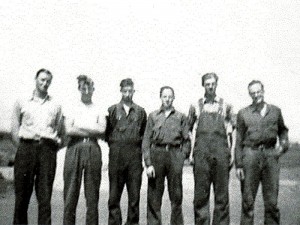 I was looking at some of my uncle, Bill Spencer’s family history information yesterday, and I came across a comment he made about some of the pictures. It was about the National Youth Administration that was transferred to the War Manpower Commission in 1941. When he mentioned that it was about educating the nation’s youth, I immediately got on the defensive, because I thought that it almost sounded like the Nazis pulling children out of their homes to train them the way the government wanted them to be trained. Of course, that couldn’t be further from the truth. In reality, and had I read the rest of Uncle Bill’s comments before I got touchy about it, I would have known that. I think sometimes, we have a preconceived idea about things, and we don’t really understand exactly what is going on before we fly off the handle.
I was looking at some of my uncle, Bill Spencer’s family history information yesterday, and I came across a comment he made about some of the pictures. It was about the National Youth Administration that was transferred to the War Manpower Commission in 1941. When he mentioned that it was about educating the nation’s youth, I immediately got on the defensive, because I thought that it almost sounded like the Nazis pulling children out of their homes to train them the way the government wanted them to be trained. Of course, that couldn’t be further from the truth. In reality, and had I read the rest of Uncle Bill’s comments before I got touchy about it, I would have known that. I think sometimes, we have a preconceived idea about things, and we don’t really understand exactly what is going on before we fly off the handle.
The education effort that my uncle was talking about was set up by the National Youth Administration through the War Manpower Commission, and had to do with the upcoming and inevitable entrance of the United States into World War II. The skills that were going to be needed to build the equipment needed for our troops to fight in the war were very different from the skills the nation’s youth had at that time, because many of them were farmers. The nation was going to need welders, machinists, and sheet metal workers desperately. The training program was designed to provide training for youth 16 to 25 years of age. The plan was that the ones who were not drafted could help with the war effort at home.
It was this program that trained my dad, Uncle Bill, Aunt Laura, and Aunt Ruth to weld, and gave them jobs in the shipyards in several different capacities, mostly as Rosie the Riveters. Of course, while Uncle Bill did a similar job to the ones done by his sisters, I don’t think he would take too kindly to the name Rosie the Riveter. Nevertheless, it was on May 1, 1942 that Uncle Bill began his training, and shortly there after, he talked my dad into doing the training too. Uncle Bill had hoped that welding would keep them both on the home front, but when that was not to be, they both went to sign up. Dad was accepted, but Uncle Bill was not, because of flat feet and a hernia. Still, the welding skill was not something that would ever be a waste where my dad was concerned, because he worked as a welder for most of his life after the war was over.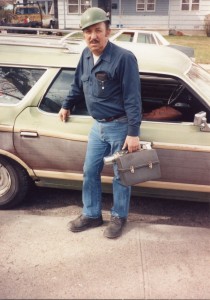
The National Youth Administration officially operated from June 26, 1935 to 1939, and was designed to provide training and help find jobs for people during the Great Depression. It was part of The New Deal programs set up by President Franklin D Roosevelt during his first term in office. I don’t often agree with government run programs, I suppose this one had it’s place. Many of the people who benefitted from the chance to train themselves for a new skill were farmers who didn’t have many other skills, and it was the training my dad received there that supported our family for his entire working life. The National Youth Administration was officially transferred to the War Manpower Commission in 1942, and officially folded in 1943. It was most likely due to lack of funding to continue the program, but I suppose it served a greater purpose during the war years, and now was no longer necessary.

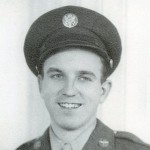 When I talked to my dad about his time at Great Ashfield in Suffolk, England, we talked about, among other things, the sign at the town entrance that still stands today, after all these years since the end of World War II. The picture of the B-17G Bomber flying low over the town is not something that would necessarily be well received these days, when people are so quick to complain about the planes when they live near an airport. I understand why people would not like planes flying low on takeoffs and landings these days, but the planes that fly over my house really don’t bother me at all. Nevertheless, my dad assured me that the people of Great Ashfield felt anything but irritation at the low flying planes that graced their skies during World War II.
When I talked to my dad about his time at Great Ashfield in Suffolk, England, we talked about, among other things, the sign at the town entrance that still stands today, after all these years since the end of World War II. The picture of the B-17G Bomber flying low over the town is not something that would necessarily be well received these days, when people are so quick to complain about the planes when they live near an airport. I understand why people would not like planes flying low on takeoffs and landings these days, but the planes that fly over my house really don’t bother me at all. Nevertheless, my dad assured me that the people of Great Ashfield felt anything but irritation at the low flying planes that graced their skies during World War II.
England was among the nations who had taken some serious hits by the Nazi war machine in the early days of World War II, prior to the entrance of the United States into the war. In fact, it was on this day, December 29, 1940 that London took a massive hit during a German raid. The German planes had been targeting London since August of 1940 as payback for the British attacks on Berlin. In September the Germans dropped 337 tons of bombs on docks, tenements, and the streets in one of London’s poorest districts. Then came December 29, 1940. The attack on that day produced widespread destruction of not just civilians, but also many of London’s cultural relics. The bombing was relentless and as a result, 15,000 separate fires were started. Historic buildings were severely damaged or destroyed. Among them, the Guildhall, which was an administrative center of the city 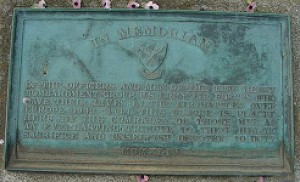 that dated back to 1673, but contained a 15th century vault. Eight Christopher Wren churches were also damaged or destroyed. St Paul’s Cathedral caught fire, but was saved by the firefighters who risked their own lives to save it. Westminster Abbey, Buckingham Palace and the Chamber of the House of Commons were also hit, but the damage to these was less severe. These attacks, that went on from September of 1940 through May of 1940, were known as the London Blitz, and they killed thousands of civilians.
that dated back to 1673, but contained a 15th century vault. Eight Christopher Wren churches were also damaged or destroyed. St Paul’s Cathedral caught fire, but was saved by the firefighters who risked their own lives to save it. Westminster Abbey, Buckingham Palace and the Chamber of the House of Commons were also hit, but the damage to these was less severe. These attacks, that went on from September of 1940 through May of 1940, were known as the London Blitz, and they killed thousands of civilians.
It wasn’t until Pearl Harbor was attacked on December 7, 1941, that the United States entered World War II, and soon after came the time that my dad spent at Great Ashfield beginning in early April of 1944 until he went home in October of 1945. While it may have seemed to many that we were somewhat late coming to the party, the war torn nations around the world were happy to see us arrive. It wasn’t that we were going to be the heroes riding in on the white horses, but we meant instant reinforcements to nations that needed assistance badly. The airmen were well received in the towns surrounding Great Ashfield, and the other air bases in England, but it was Great Ashfield that felt such gratitude that they went to the length of making and leaving to this day, the sign showing the B-17G Bomber flying low over the local church. There is also another memorial honoring the men of the 8th Air Force and the 385th Heavy Bombardment Group.
The reasons for the warm feelings toward the 8th Air Force and the 385th Heavy Bombardment Group are obvious. It was so much more than just the reinforcements the United States provided. While talking to my 
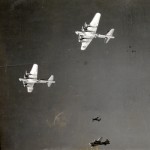 dad about this, he revealed that the main reason that they were so grateful is that the safest times for the area were when the B-17G Bombers were flying overhead. The German aircraft would become really scarce when the Bombers were around, because they didn’t want to be shot down either. The constant activity surrounding the air field made it almost impossible for the Germans to attack the area. Bombings are horrible, and take a huge toll on the civilians, as well as buildings. I suppose I would be eternally grateful for those planes, those men, and the United States 8th Air Force too. It gave peace of mind.
dad about this, he revealed that the main reason that they were so grateful is that the safest times for the area were when the B-17G Bombers were flying overhead. The German aircraft would become really scarce when the Bombers were around, because they didn’t want to be shot down either. The constant activity surrounding the air field made it almost impossible for the Germans to attack the area. Bombings are horrible, and take a huge toll on the civilians, as well as buildings. I suppose I would be eternally grateful for those planes, those men, and the United States 8th Air Force too. It gave peace of mind.
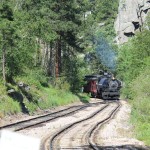 I read an article in the Casper Star Tribune yesterday that made me think about the many changes in the railroad over the years. When my grandfather, Allen Luther Spencer was working on the railroad as a carpenter during World War II, and for years before that, it took a number of people to run a train. The freight trains during World War II typically had seven people aboard…an engineer, conductor, up to four brakemen and a fireman. With all the trains that were running…not nearly as many as we have today…the railroad supplied a lot of jobs. This was just to run the actual train. The maintenance personnel, the station managers, and others who were required to keep the trains running smoothly, added to the number of people it took to ultimately move the trains along the tracks at any given moment. The trains of that era weren’t anywhere near as long as they are these days either.
I read an article in the Casper Star Tribune yesterday that made me think about the many changes in the railroad over the years. When my grandfather, Allen Luther Spencer was working on the railroad as a carpenter during World War II, and for years before that, it took a number of people to run a train. The freight trains during World War II typically had seven people aboard…an engineer, conductor, up to four brakemen and a fireman. With all the trains that were running…not nearly as many as we have today…the railroad supplied a lot of jobs. This was just to run the actual train. The maintenance personnel, the station managers, and others who were required to keep the trains running smoothly, added to the number of people it took to ultimately move the trains along the tracks at any given moment. The trains of that era weren’t anywhere near as long as they are these days either.
As technology became more sophisticated, fewer people were needed to run a train, and by the 1970s, the number of people on a freight train had dropped to five people, and by 1991, only the engineer and the 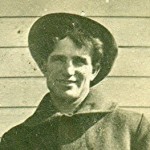 conductor were needed to run the train. When you consider that the trains have become so long that it can take twenty minutes to get the whole train through a crossing, that seems amazing to me. I guess it is amazing to a lot of other people too, because as the railroads are trying to eliminate one of those positions as well, a lot of people are quite worried about the safety of the trains. What strikes me as funny, however, is that the concern is that if they need to disconnect a car so emergency vehicles can get through, the engineer can’t leave his post to do so. I’m sure that in the future that part will be handled too, because technology is getting to the point whereby the train really could be run without a driver, just like the model trains are.
conductor were needed to run the train. When you consider that the trains have become so long that it can take twenty minutes to get the whole train through a crossing, that seems amazing to me. I guess it is amazing to a lot of other people too, because as the railroads are trying to eliminate one of those positions as well, a lot of people are quite worried about the safety of the trains. What strikes me as funny, however, is that the concern is that if they need to disconnect a car so emergency vehicles can get through, the engineer can’t leave his post to do so. I’m sure that in the future that part will be handled too, because technology is getting to the point whereby the train really could be run without a driver, just like the model trains are.
Much like the model trains, there is a controller at a central location who can see all the trains for his area. In reality, they probably could control the train with no one on it, but how strange that would be…especially when talking about passenger trains. But then, with subways, and airport trains, we often get on the train, and never see if anyone is running it. In airports, the voice telling you of your arrival is even 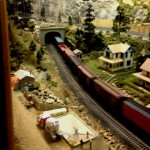 mechanical. I have to wonder if anyone is running those, and maybe someone out there will clarify that one for me. Someday, or even already, we will probably ride trains and never give a second thought to the fact that there is no engineer. Everything has become so technical, and we have reached a point of being so used to robotics, that we don’t even give a second thought to the aspect of someone being in control of this massive train we have just boarded…and people have said that flying is like being in a cattle truck. Turning control of our lives to someone we don’t know, or even to a robot, seems very strange, even today, but what would the people of my grandfather’s era have thought about having no one to run the train. I’m quite sure they would never have boarded at all.
mechanical. I have to wonder if anyone is running those, and maybe someone out there will clarify that one for me. Someday, or even already, we will probably ride trains and never give a second thought to the fact that there is no engineer. Everything has become so technical, and we have reached a point of being so used to robotics, that we don’t even give a second thought to the aspect of someone being in control of this massive train we have just boarded…and people have said that flying is like being in a cattle truck. Turning control of our lives to someone we don’t know, or even to a robot, seems very strange, even today, but what would the people of my grandfather’s era have thought about having no one to run the train. I’m quite sure they would never have boarded at all.
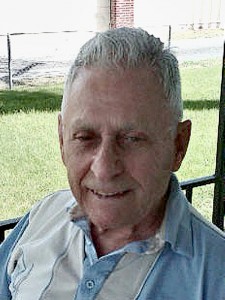 My Uncle George Hushman, who is a very dear part of this family, had one of the more difficult beginnings of any of us. Uncle George was raised in the orphanage in Casper, Wyoming. His mother died when he was just eleven, and his dad, who wasn’t in his life earlier on, died in World War II in 1943, when he was seventeen years old. The children’s home was where his first ties to my family would begin. He befriended one of the sons of my son-in-law, Kevin Petersen’s great grandmother, Hettie Middleton St John, and she took him into her family, in a way. She didn’t adopt him or take him in as a foster child, but because of that friendship, he was a regular fixture at their home, and they always felt like he was an unofficially adopted son. Uncle George’s family also felt that way about Hettie over the years. I remember my cousin, Shannon Limmer going over to her Grandma St John’s house to help her get ready for bed, many times. Little did I know then how this unofficial family relationship would tie into my own family years later, but that is what it did, when my daughter, Corrie married Kevin Petersen. It was quite surprising to find out that my Uncle George had such close ties to Kevin’s mom, Becky Skelton and her family….but it was pretty cool too. The kindness of Kevin’s great grandmother had lived on over the years, never to be forgotten.
My Uncle George Hushman, who is a very dear part of this family, had one of the more difficult beginnings of any of us. Uncle George was raised in the orphanage in Casper, Wyoming. His mother died when he was just eleven, and his dad, who wasn’t in his life earlier on, died in World War II in 1943, when he was seventeen years old. The children’s home was where his first ties to my family would begin. He befriended one of the sons of my son-in-law, Kevin Petersen’s great grandmother, Hettie Middleton St John, and she took him into her family, in a way. She didn’t adopt him or take him in as a foster child, but because of that friendship, he was a regular fixture at their home, and they always felt like he was an unofficially adopted son. Uncle George’s family also felt that way about Hettie over the years. I remember my cousin, Shannon Limmer going over to her Grandma St John’s house to help her get ready for bed, many times. Little did I know then how this unofficial family relationship would tie into my own family years later, but that is what it did, when my daughter, Corrie married Kevin Petersen. It was quite surprising to find out that my Uncle George had such close ties to Kevin’s mom, Becky Skelton and her family….but it was pretty cool too. The kindness of Kevin’s great grandmother had lived on over the years, never to be forgotten.
Of course, the main way that Uncle George became a part of my family was when he married my Aunt Evelyn 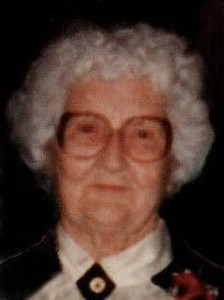 Byer Hushman on September 1, 1947. I wonder if he knew that his wedding day was also Hettie’s birthday. Maybe that occurred to him, and maybe not, but World War II was over, and like most men who fought in that war, it was a time to pursue their own happiness. They had lived through the war, and for that they were grateful. Now they could live their lives. It was just a few years after the Uncle George returned from the war, where he served in the United States Navy, and was wounded in action. His injuries could have ended his life, but God had other plans for him….and for that we will always be grateful. Uncle George sustained a head injury, and to this day, has a plate in his head. Thankfully that has been the only long term change in his life. His mind remained intact.
Byer Hushman on September 1, 1947. I wonder if he knew that his wedding day was also Hettie’s birthday. Maybe that occurred to him, and maybe not, but World War II was over, and like most men who fought in that war, it was a time to pursue their own happiness. They had lived through the war, and for that they were grateful. Now they could live their lives. It was just a few years after the Uncle George returned from the war, where he served in the United States Navy, and was wounded in action. His injuries could have ended his life, but God had other plans for him….and for that we will always be grateful. Uncle George sustained a head injury, and to this day, has a plate in his head. Thankfully that has been the only long term change in his life. His mind remained intact.
After his marriage to Aunt Evelyn, Uncle George would go on to have five children, and their lives would forever be intertwined with the lives of my sisters and me. Aunt Evelyn and Uncle George often double dated with my parents, and we spent many awesome times at each others’ houses. Uncle George’s soft spoken humor has always endeared him to me. He was always such a gentle man. So often, and maybe it is more these days than his childhood days, children who were raised in an orphanage or in foster care, ended up being somewhat mean…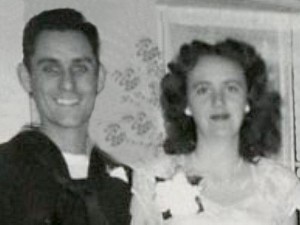 as a self defense mechanism. When there are many kids and little supervision, you have to learn take care of yourself, because no one else will. I suppose that he may have had the advantage of a good friend’s mother to keep him from becoming jaded, or it could have been just something within himself that would not allow him to be poorly affected by the circumstances around him. In many ways I think it was probably a lot him and a little bit of help for those around him, like Kevin’s great grandmother, Hettie St John. Nevertheless, it is the person themselves who ultimately determines the kind of person they will become, and Uncle George became a wonderful man. Today is Uncle George’s 88th birthday. Happy birthday Uncle George!! Have a great day!! We love you!!
as a self defense mechanism. When there are many kids and little supervision, you have to learn take care of yourself, because no one else will. I suppose that he may have had the advantage of a good friend’s mother to keep him from becoming jaded, or it could have been just something within himself that would not allow him to be poorly affected by the circumstances around him. In many ways I think it was probably a lot him and a little bit of help for those around him, like Kevin’s great grandmother, Hettie St John. Nevertheless, it is the person themselves who ultimately determines the kind of person they will become, and Uncle George became a wonderful man. Today is Uncle George’s 88th birthday. Happy birthday Uncle George!! Have a great day!! We love you!!
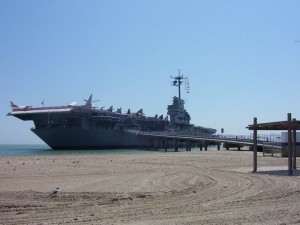
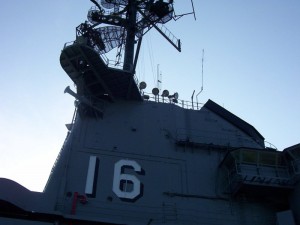 While Bob and I were in Texas on vacation in April of 2006, we had the wonderful opportunity to visit the USS Lexington…The Blue Ghost. This ship has a long and interesting history, and one I didn’t really know all that much about when I visited the ship. The ship we saw is not the original USS Lexington, but rather the one that replaced the original. The USS Lexington that we saw has an amazing history too…it is, in fact, a legend that was named for the American Revolution’s Battle of Lexington. On December 5, 1941, the original USS Lexington, which was one of the two largest aircraft carriers the United States had during World War II, was making its way across the Pacific in order to carry a squadron of dive bombers to defend Midway Island from an anticipated Japanese attack. The attack they anticipated did occur, but not where it had been expected. The attack was lodged on Pearl Harbor instead. The USS Lexington turned around and headed for Pearl Harbor, arriving on December 13th. That Lexington was later sunk.
While Bob and I were in Texas on vacation in April of 2006, we had the wonderful opportunity to visit the USS Lexington…The Blue Ghost. This ship has a long and interesting history, and one I didn’t really know all that much about when I visited the ship. The ship we saw is not the original USS Lexington, but rather the one that replaced the original. The USS Lexington that we saw has an amazing history too…it is, in fact, a legend that was named for the American Revolution’s Battle of Lexington. On December 5, 1941, the original USS Lexington, which was one of the two largest aircraft carriers the United States had during World War II, was making its way across the Pacific in order to carry a squadron of dive bombers to defend Midway Island from an anticipated Japanese attack. The attack they anticipated did occur, but not where it had been expected. The attack was lodged on Pearl Harbor instead. The USS Lexington turned around and headed for Pearl Harbor, arriving on December 13th. That Lexington was later sunk.
In early May, the first USS Lexington returned to the South Pacific to assist the USS Yorktown to fight against the Japanese offensive in the Coral Sea. On May 7th and 8th of 1942 planes from the USS Lexington helped sink the small Japanese aircraft carrier Shoho and participated in attacks on the large carriers Shokaku and Zuikaku. But, she was a major target of Japanese carrier planes and received two torpedo and three bomb hits. Initially, it appeared that the damage control efforts were successful, but she was racked by gasoline explosions early on the afternoon of May 8th. The fires were out of control, and it was clear that the Lexington was breathing her last breath. The ship was abandoned by her crew and it sunk. It was the first US aircraft carrier to be lost in World War II.
The second Lexington began its journey into fame on February 17, 1943, and it would serve longer and set more records than any other carrier in US Naval history. Originally to be named the Cabot, the name was changed after the sinking of the original Lexington in the Coral Sea. The Lexington became a part of the Fifth Fleet at Pearl Harbor. The ship took part in nearly every major operation in the Pacific Theater, serving 21 months in combat. It was here that the Lexington became famous in her own right. The Japanese radio station, the Tokyo Rose was always spreading rumors and propaganda. The station declared the Lexington sunk at least four times, but was proven wrong at the next battle, when the Lexington returned to the fight. I guess it must have been in an effort to save face that the Tokyo Rose dubbed the Lexington The Blue Ghost, indicating that it was a ghost ship returning to haunt the Japanese again and again. All the hard work paid off in the end though. The Lexington participated in the Great Marianas Turkey Shoot, the Battle of Leyte Gulf, and the Battle of the Philippine Sea. She received the Presidential Unit Citation and 11 Battle Stars during her service in World War II, and she was the first battleship into Tokyo Harbor for the Japanese peace treaty signing.
By the time we visited the second USS Lexington, she had been a museum since October of 1992. The ship had been decommissioned in August of 1990, after serving as a training ship for naval aviators in Pensacola, Florida since 1962. She was moved to her permanent location in Corpus Christi, Texas in January of 1992. We had the wonderful opportunity to explore the ship to our hearts’ content while we were there. It was quite interesting to us. I didn’t know much about how things were on a ship, but I found myself amazed over and over again. The way the crew lived, seemed so archaic to me, but I suppose that anyone who has ever served on a ship would tell me that it was all very normal. Finding your way around seemed so difficult to me, and I know we would have been lost repeatedly, had they not marked the directions with arrows on the floor and walls. It was hard to imagine just what being on board this ship in the midst of a battle must have felt. I don’t think anyone goes to war without a measure of fear. Nevertheless, there was no going back for the men, and later, women who 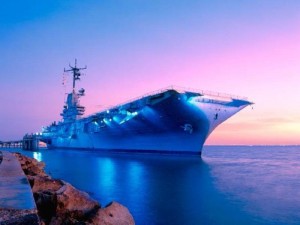
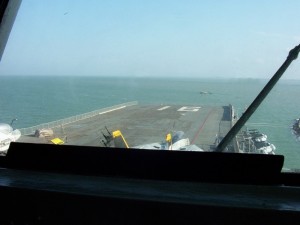 served on the Lexington. The Lexington was the first aircraft carrier to have women stationed on board. These men and women served courageously and honorably, some giving their lives on the Lexington fighting the battles that were laid out before her. Knowing the history of this great ship leaves me with an entirely new perspective about what an awesome ship it was, and it makes me glad I had the opportunity to tour the USS Lexington.
served on the Lexington. The Lexington was the first aircraft carrier to have women stationed on board. These men and women served courageously and honorably, some giving their lives on the Lexington fighting the battles that were laid out before her. Knowing the history of this great ship leaves me with an entirely new perspective about what an awesome ship it was, and it makes me glad I had the opportunity to tour the USS Lexington.
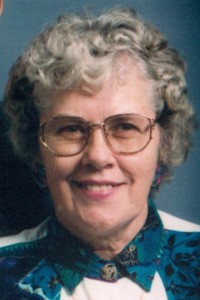
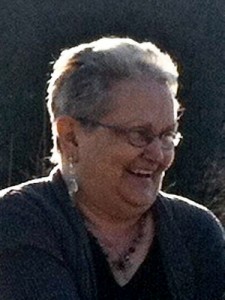 In times past, many people sent out Christmas cards. It was simply a part of the season. You always had to make sure you got them in the mail as early as possible, or they didn’t arrive in time for Christmas. As a young newlywed, I tried really hard to get that tradition started, but it seemed like I always got cards from people that I didn’t expect and then they didn’t get one from me, or the time to mail them was long gone before I could even wrap my mind around the fact that the Christmas season was once again upon us. Most often, it was all I could do to get my Christmas shopping done…much less send out Christmas cards. It just seemed a lost cause, and like most lost causes, it went the way of the wind early on in my marriage. With two kids to take care of, there just didn’t seem to be enough hours in the day for such an extra.
In times past, many people sent out Christmas cards. It was simply a part of the season. You always had to make sure you got them in the mail as early as possible, or they didn’t arrive in time for Christmas. As a young newlywed, I tried really hard to get that tradition started, but it seemed like I always got cards from people that I didn’t expect and then they didn’t get one from me, or the time to mail them was long gone before I could even wrap my mind around the fact that the Christmas season was once again upon us. Most often, it was all I could do to get my Christmas shopping done…much less send out Christmas cards. It just seemed a lost cause, and like most lost causes, it went the way of the wind early on in my marriage. With two kids to take care of, there just didn’t seem to be enough hours in the day for such an extra.
Christmas cards used to be something most people did. It was tradition, passed on from parent to child. My Aunt Jeanette Byer has always had her act together on the Christmas card thing, and every year…like clock work, I get a card from her right about this time. Yes, it came yesterday, so that is what prompted this story. When I get her card, and think about just how sweet she is to always think of me and so many other people at this time of year, I start to think that I really should send her a card back, and if I ever got that done, Aunt Jeanette would probably faint, because it has not happened at this point. I also got one from my cousin, Shirley Cameron last year, and of course, it was too late to send one back by then, but it did show me just how sweet my cousin, 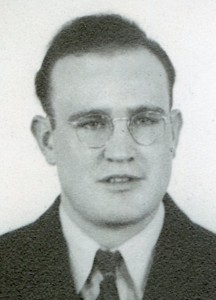
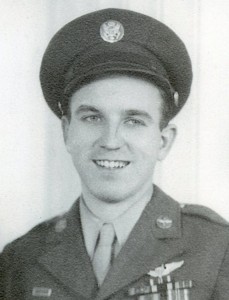 Shirley is, and it is my hope that she knows just how much I love her, even in the absence of a Christmas card.
Shirley is, and it is my hope that she knows just how much I love her, even in the absence of a Christmas card.
As the years have gone by, I have started receiving fewer and fewer Christmas cards, and while it could be because I never get any sent out, I have a feeling that fewer and fewer people send them out anymore. With the closer connections we have through Facebook, and the ability to send out e-cards, I think the practice of sending out Christmas cards is quickly becoming a thing of the past. Modern technology has a way of doing that, and while modern technology is vital to our way of life, maybe it is a little bit sad to see traditions like letters and Christmas cards go by the wayside. I know my Uncle Bill Spencer would feel that way, because he loved letters. He wanted the handwriting of the individual to have as a keepsake for all time. I can understand that now, where I could not before. Every time I see Uncle Bill’s handwriting, I know it instantly. I have seen it so often that it is as much him as he is. That is a tribute to the amount of writing he did on the family history all these years.
My dad loved Christmastime. As a Christian, it marks the birth of our Lord and Saviour, so it is a day that is important to us. I know that every time I see my dad’s handwriting, it makes my heart jump a little bit. It is like a connection to him that lives on here, even though he lives in Heaven now. For that love of handwriting, I have to thank my Uncle Bill, because it was he who first pointed out its importance. I came across a Christmas card sent home to Uncle Bill, from my dad during World War II, while he was in training in Salt Lake City, Utah. 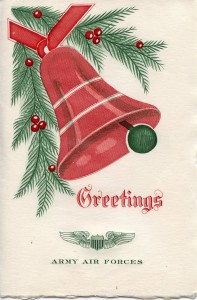
 It was among the things that my grandmother kept, and then gave back to him later on, and while the only handwriting on it is simply my dad’s name, I know that the card was among the things that were dear to his brother’s heart, because it was sent to him from his brother, Allen Spencer, who was spending Christmas far from family in 1943. I’m sure that it was a lonely time for both of them, because they were very close, and it was a way for my dad to reach out across the miles and let his brother know, that he loved him. I guess that is really what Christmas cards, or any other cards are all about. Christmas is simply a season for showing your love, whether you mail a card, write a letter, send an e-card, or make an announcement on Facebook. It’s all about showing your love.
It was among the things that my grandmother kept, and then gave back to him later on, and while the only handwriting on it is simply my dad’s name, I know that the card was among the things that were dear to his brother’s heart, because it was sent to him from his brother, Allen Spencer, who was spending Christmas far from family in 1943. I’m sure that it was a lonely time for both of them, because they were very close, and it was a way for my dad to reach out across the miles and let his brother know, that he loved him. I guess that is really what Christmas cards, or any other cards are all about. Christmas is simply a season for showing your love, whether you mail a card, write a letter, send an e-card, or make an announcement on Facebook. It’s all about showing your love.
 Sometimes we think we know the whole story, and other times, we are pretty sure we don’t know the story at all. For me, the attack of Pearl Harbor is one that has seemed somewhat fuzzy. I mean I know that the Japanese attacked Pearl Harbor without warning on December the 7th of 1941…but why exactly. I have to wonder if I am the only one who isn’t exactly sure why my dad had to go to war in March of 1943 at the age of 18 years, along with several uncles. I know that his family knew that it was coming, and they were dreading it very much, but it was inevitable. We had been attacked. We must retaliate when we are attacked!! I understood that…but why were we attacked, and was it without provocation?
Sometimes we think we know the whole story, and other times, we are pretty sure we don’t know the story at all. For me, the attack of Pearl Harbor is one that has seemed somewhat fuzzy. I mean I know that the Japanese attacked Pearl Harbor without warning on December the 7th of 1941…but why exactly. I have to wonder if I am the only one who isn’t exactly sure why my dad had to go to war in March of 1943 at the age of 18 years, along with several uncles. I know that his family knew that it was coming, and they were dreading it very much, but it was inevitable. We had been attacked. We must retaliate when we are attacked!! I understood that…but why were we attacked, and was it without provocation?
Then I came across something that happened on Dec 1, 1941. This was the day that the Japanese made the decision to attack Pearl Harbor. This had been a possibility since the 1920s, but in 1931, with the Japanese invasion of Manchuria things got really tense. Japan was insistent on invading other countries, and were slowly moving into China. Beginning in 1938, the United States adopted increasingly tighter trade restrictions with Japan. Nevertheless, Japan would not be deterred from its expansionist policies, or from signing the Tripartite Pact in 1940 with Nazi Germany and Fascist Italy, officially forming the Axis Powers. In 1940, Japan invaded French Indochina so they could embargo all imports into China including war supplies from the United States. Some of these facts I knew, and some I didn’t. This is, of course, a very shortened version, but you can see that Japan was becoming increasingly more dangerous to the world, and to everyone in it.
On November 7, 1941, Secretary of State, Cordell Hull warned President Franklin Roosevelt’s cabinet that an 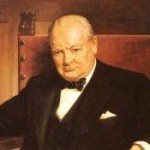 attack on the United States by Japan could happen at any time…without warning. On November 9th, Winston Churchill, who is my 15th cousin once removed, told the United States that if we went to war with Japan, the British Empire would declare war on Japan “within the hour.” It was a heavy responsibility for the United States, and for Secretary of State Hull. Nevertheless, something had to be done, and the world was looking to the United States to make the first move.
attack on the United States by Japan could happen at any time…without warning. On November 9th, Winston Churchill, who is my 15th cousin once removed, told the United States that if we went to war with Japan, the British Empire would declare war on Japan “within the hour.” It was a heavy responsibility for the United States, and for Secretary of State Hull. Nevertheless, something had to be done, and the world was looking to the United States to make the first move.
The decision to go to war is a difficult one, and one that I do not believe any civilized nation takes lightly. I’m sure that is why so many presidents have tried every possible restriction against some of the crazy dictators in this world. The problem is that so many of those dictators are not moved from their agendas…no matter what. Secretary of State Hull decided to try one more time, and so he wrote the Hull Note on November 26, 1941, which outlined ten proposals, some of which matched earlier Japanese proposals, but of others, Hull knew meant he was basically declaring war on Japan. The agreement would have to be made by November 29, and of course, history tells us that Japan did not agree. While Australia tried an offer to act as mediator between the United States and Japan on November 29th, they were told that the opportunity to settle this was past. On December 1, 1941, Japan’s Emperor Hirohito declared war against the United States, Britain, and the Netherlands, after rejecting the demands of the United States in the Hull Note, which the Japanese later dubbed The Hull Ultimatum, as a way of making the United States look like they were to blame for all this.
It was this action…on this day in history, and the events leading up to this action, and those that would follow, including the attack on Pearl Harbor on December 7, 1941 that drew the United States and our allies into World War II, and that would ultimately bring about my dad’s part in that war…as well as the part played by so many others, including a number of my uncles. War is a horrible event, and one that I truly don’t believe anyone 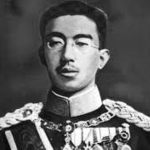 wants to be a part of, but sometimes it is inevitable. When a nation, such as Japan decides to take over the world…one weaker country at a time, someone has to step up and put a stop to it. Unfortunately, history has placed that responsibility in the hands of the United States many times. There are people who think we should just stay out of it, but if we did, just how long would it be before that nation came after us, because we appeared weak too. We might be able to fight them off…unless we have allowed our military might to be reduced to a point of making us as weak as some of these other nations. If we couldn’t fight them off, then our nation would lose it’s many freedoms, and we would find ourselves living under a dictator too. While I hate war too, I am not willing to lose the freedoms our military personnel have fought so hard for…are you?
wants to be a part of, but sometimes it is inevitable. When a nation, such as Japan decides to take over the world…one weaker country at a time, someone has to step up and put a stop to it. Unfortunately, history has placed that responsibility in the hands of the United States many times. There are people who think we should just stay out of it, but if we did, just how long would it be before that nation came after us, because we appeared weak too. We might be able to fight them off…unless we have allowed our military might to be reduced to a point of making us as weak as some of these other nations. If we couldn’t fight them off, then our nation would lose it’s many freedoms, and we would find ourselves living under a dictator too. While I hate war too, I am not willing to lose the freedoms our military personnel have fought so hard for…are you?
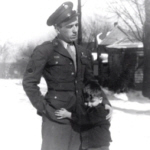 Veteran’s Day is a day about sacrifice and honor, duty and dedication, war and peace, but the day cannot pass for me without thoughts of my dad, and how much I miss him. I know I am not alone in these thoughts, because my mom and sisters also miss him, as well as the rest of our family. Still, no one who has lost a loved one who was a veteran, whether to war or after, can pass this day without thoughts of their loved ones. I think of my Grandpa Byer, my uncles Ted Byer, Cliff Byer, Larry Byer, Jim Wolfe, and my cousin, Larry Wolfe…all gone now, but not lost in war, thankfully. I think of those who, in World War II, couldn’t serve in combat, and so they served at home in the shipyards as builders and Rosie the Riveters, like my Aunt Ruth, Aunt Laura, and Uncle Bill, who couldn’t go because of a hernia and flat feet. And I think of the loved ones…too many to list here…who have fought and returned, and those who continue to fight to secure our nation, and stop terrorist acts all over the globe.
Veteran’s Day is a day about sacrifice and honor, duty and dedication, war and peace, but the day cannot pass for me without thoughts of my dad, and how much I miss him. I know I am not alone in these thoughts, because my mom and sisters also miss him, as well as the rest of our family. Still, no one who has lost a loved one who was a veteran, whether to war or after, can pass this day without thoughts of their loved ones. I think of my Grandpa Byer, my uncles Ted Byer, Cliff Byer, Larry Byer, Jim Wolfe, and my cousin, Larry Wolfe…all gone now, but not lost in war, thankfully. I think of those who, in World War II, couldn’t serve in combat, and so they served at home in the shipyards as builders and Rosie the Riveters, like my Aunt Ruth, Aunt Laura, and Uncle Bill, who couldn’t go because of a hernia and flat feet. And I think of the loved ones…too many to list here…who have fought and returned, and those who continue to fight to secure our nation, and stop terrorist acts all over the globe.
Theirs is a sacrifice beyond measure, a debt we cannot repay. Every day of their service they work, without knowing if they will return to their loved ones, or if this will be the day that a bullet, rocket, or bomb will have their name on it. They go to work knowing fear, as if it was their closest friend, and yet knowing that it is no friend at all. They have to bite back that fear and do their job…because it is needed…they are needed…because without them we are a nation unprotected. Most of us go to bed at night, secure in what the next day will bring, because we live in a nation where freedom belongs to everyone. Nevertheless, we must remember that it is not free. Over the years, our nation has lost so many young people to war. They were really our hope for the future. They were people full of promise. People with plans and dreams…all gone now.
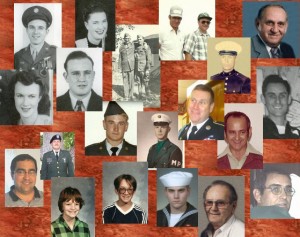 War is a horrible thing, and none of us really want to engage in it. Still, evil exists out there, and it does its very best to reek havoc upon the world. If we do nothing, many innocent people will die. And so God created soldiers. He knew that they would have to be people of honor and dedication, with a strong sense of duty and love for their fellow man. They would have to be people of courage and bravery…able to bite back the fear that dwells all around them. God knew the kind of people they would have to be…Heroes. And that is what every veteran is, was, and always will be…a hero. Today is Veteran’s Day. It is a day to honor those who have given so much to keep us free. Thank you all for your great service. God bless you…everyone of you.
War is a horrible thing, and none of us really want to engage in it. Still, evil exists out there, and it does its very best to reek havoc upon the world. If we do nothing, many innocent people will die. And so God created soldiers. He knew that they would have to be people of honor and dedication, with a strong sense of duty and love for their fellow man. They would have to be people of courage and bravery…able to bite back the fear that dwells all around them. God knew the kind of people they would have to be…Heroes. And that is what every veteran is, was, and always will be…a hero. Today is Veteran’s Day. It is a day to honor those who have given so much to keep us free. Thank you all for your great service. God bless you…everyone of you.
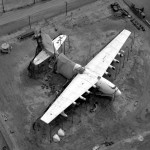 Since man first learned to fly, there have been many kinds of planes. It seems like everyone is trying to improve on them. Hollywood producer, Howard Hughes was one of the people who wanted to do something new with planes, so he founded Hughes Aircraft Company in 1932. He tested cutting-edged aircraft that he had designed and in 1937 broke the transcontinental flight-time record. He then broke the world record in 1938 by flying around the world in 19 hours and 14 minutes. Those were amazing feats, but it was another of his planes that caught my dad’s interest.
Since man first learned to fly, there have been many kinds of planes. It seems like everyone is trying to improve on them. Hollywood producer, Howard Hughes was one of the people who wanted to do something new with planes, so he founded Hughes Aircraft Company in 1932. He tested cutting-edged aircraft that he had designed and in 1937 broke the transcontinental flight-time record. He then broke the world record in 1938 by flying around the world in 19 hours and 14 minutes. Those were amazing feats, but it was another of his planes that caught my dad’s interest.
After the United States entered World War II, the government asked Hughes Aircraft Company to build a large flying boat capable of transporting men and materials very long distances. The concept had originally been that of Henry Kiser, but he dropped out and Howard Hughes took over. The plane was built mostly of birch, but also of spruce, due to wartime restrictions on the use of steel. The wood was laminated with plastic and covered in fabric. The design gave the plane a gray/white color, and since spruce was used in the design, the plane was dubbed the Spruce Goose. The plan was for it to be able to transport 700 men at a time. The plane had a wingspan of 320 feet and it was powered by eight propeller engines and was designed to take off and land on the water. It’s first and last flight was on November 2, 1947. It wasn’t originally intended to be a flight, but just a taxi trip on Long Beach Harbor. Howard Hughes decided on a whim to fly it. It flew 70 feet over the water for one mile before landing successfully.
Since me dad had built planes at Douglas Aircraft Company before going into the service during World War II, the Spruce Goose really intrigued him. It was such a novelty…whether it was supposed to be or not. When Mom and Dad were in McMinnville, Oregon, they finally had the opportunity to visit the Evergreen Aviation Museum 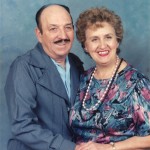 and see the Spruce Goose for themselves. I can just hear the thoughts going through my dad’s head the moment he saw it. I’ll bet it was all he could do, not to jump up and down with excitement. I’m sure it was an awesome moment.
and see the Spruce Goose for themselves. I can just hear the thoughts going through my dad’s head the moment he saw it. I’ll bet it was all he could do, not to jump up and down with excitement. I’m sure it was an awesome moment.
I don’t know if Dad ever saw the video of the first and only flight of the Spruce Goose or not, but I have had the chance to see it. It was amazing to see a plane with a wingspan that was longer than a football field actually be able to get in the air. To me though, it seemed like that flight took a lot of effort. I don’t think I would have wanted to trust it to fly the long distance flights to Europe and such. Still, it flew, and it is the largest plane, and no one can take those things away from the Spruce Goose.
 My Uncle Jim Richards has always been a soft spoken man. To me he always seemed shy, and maybe he is, but over the last year, have come across information that has made me realize that while he might have been shy, he was also a very strong man…a man of deep convictions, who valued has family and took care of them when they needed it the most. I can’t imagine growing up without my dad, and yet when Uncle Jim’s dad died, an eight year old Uncle Jim stepped up to the plate, and did his very best to fill the shoes his dad had left behind. I’m sure that at first the whole head of the household thing seemed almost cute to his mom, but as the years went on, and he continued to show a leadership ability far beyond his years, his mother learned to depend on this son who was the man of the house before he was even old enough to be a man. He proved himself to be the person everyone could count on.
My Uncle Jim Richards has always been a soft spoken man. To me he always seemed shy, and maybe he is, but over the last year, have come across information that has made me realize that while he might have been shy, he was also a very strong man…a man of deep convictions, who valued has family and took care of them when they needed it the most. I can’t imagine growing up without my dad, and yet when Uncle Jim’s dad died, an eight year old Uncle Jim stepped up to the plate, and did his very best to fill the shoes his dad had left behind. I’m sure that at first the whole head of the household thing seemed almost cute to his mom, but as the years went on, and he continued to show a leadership ability far beyond his years, his mother learned to depend on this son who was the man of the house before he was even old enough to be a man. He proved himself to be the person everyone could count on.
Just a year before his dad’s passing, while the nation was in the middle of World War II, Uncle Jim found himself the younger brother of a war hero who had been killed in action while storming the beaches of Normandy, France…his brother, Dale Richards. There was not much that a young boy of seven years could do to ease the pain his parents felt, and there was not enough money to bring his brother home, so he was buried in Normandy along with many other war dead. I can’t imagine the pain that must have inflicted on the family, and how one seven year old boy felt helpless to stop the hurting that had come upon his family. Then to add to the pain, his dad passed away just one year later. The sadness must have been overwhelming for them. I think too, that it probably shaped Uncle Jim’s life into the kind of life it was…one of close family ties, and helping each other whenever possible.
I don’t know if Uncle Jim will ever be able to go over to France and visit the grave of his war hero brother, but after hearing about the facts surrounding the loss of his brother, I set out to find out what I could. I didn’t have very much to go on…just his name, but before long, with the help of Aunt Sandy Pattan, Ancestry.com and Findagrave.com, I found what I was looking for…the location of the grave of Dale Richards, and even better, a picture of his grave. At the family Christmas party, I was able to give that picture to Uncle Jim. It was an 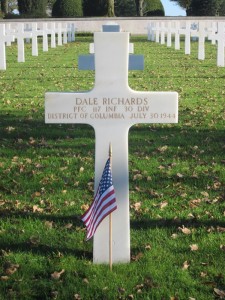 emotional moment for his whole family, and I was so happy to be able to give him that gift, because he was such a sweet man who had done so much for so many others, asking nothing for himself. The picture will never replace the loss of his brother and dad all those years ago, but for the man that had become my uncle, I hope it was a comfort, because his brother’s grave is in a beautiful, well kept honorable place, and I’m sure that is just what Uncle Jim would want for his brother.
emotional moment for his whole family, and I was so happy to be able to give him that gift, because he was such a sweet man who had done so much for so many others, asking nothing for himself. The picture will never replace the loss of his brother and dad all those years ago, but for the man that had become my uncle, I hope it was a comfort, because his brother’s grave is in a beautiful, well kept honorable place, and I’m sure that is just what Uncle Jim would want for his brother.
Uncle Jim will always be a quiet, soft spoken man, who carries a big load on his shoulders. It’s not that his life these days is so hard, but rather that he is the family patriarch…a lot like my dad was. The family looks to him for leadership, guidance, and emotional support. When things go wrong, he shows them the way to go, and when all is well, they all share in the joy of it together. Today is a day of joy. Today is Uncle Jim’s birthday. Happy birthday Uncle Jim!! Have a wonderful day!! We love you!!

